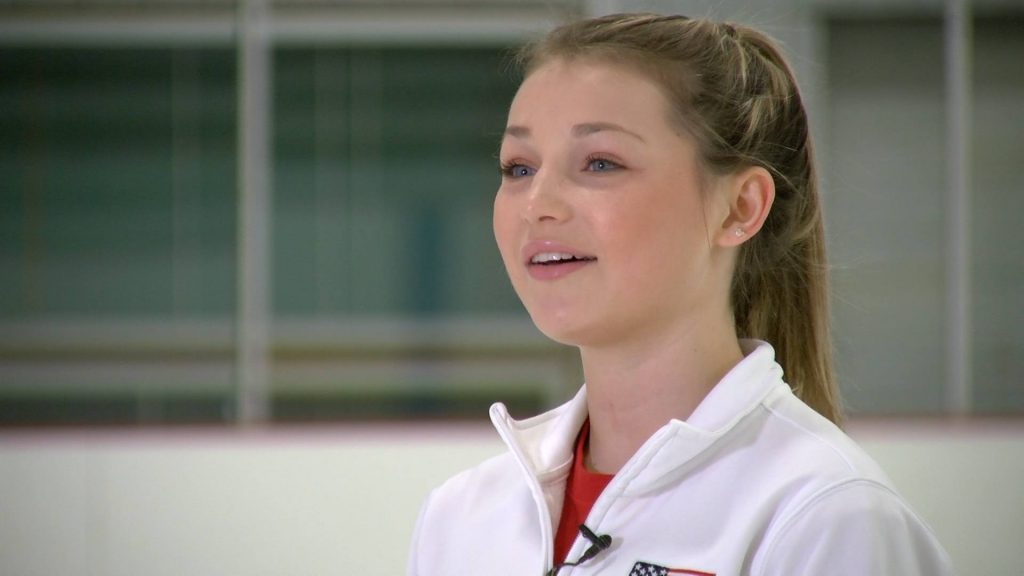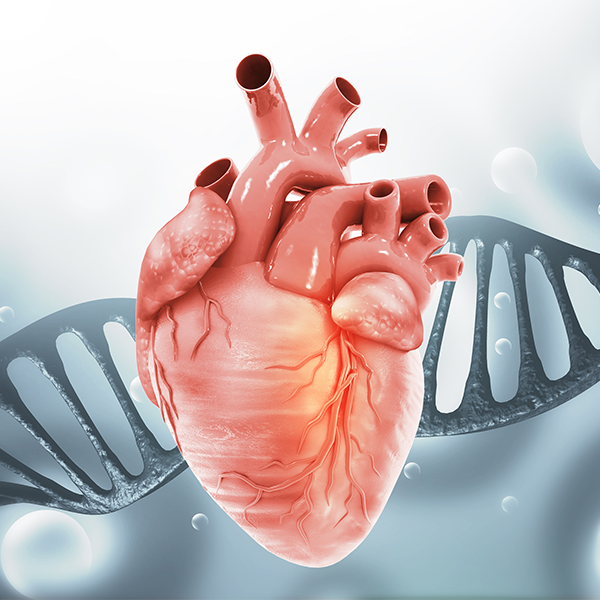
Cardiomyopathy is a medical term for a number of genetic and nongenetic diseases involving the heart muscle that adversely affect the heart's mechanical pumping function and its electrical system. It can occur in people of all ages, races or genders, and it is a frequent cause of sudden cardiac arrest and sudden cardiac death.
For Joelle Hammann and her family from Lewiston, Minnesota, being diagnosed with the rare condition of genetic arrhythmogenic right ventricular cardiomyopathy (ARVC) was a shock. It meant the teen would need to stop her athletic activities, including competitive figure skating. And her journey ultimately led to not only a new heart, but also a return to the ice.
Watch: Joelle's journey to a new heart.
Journalists: Broadcast-quality video (4:46) is in the downloads at the end of this post. Please "Courtesy: Mayo Clinic News Network." Read the script.
"I love hearing the grinding of my skates on the ice," says Hammann.
Speed, grace, strength and determination are just some of the qualities of a competitive figure skater.
"All your nerves just kind of calm down, and you just flow along the ice. You do your jumps and your spins, and everything just kind of works together. And everything that you've been practicing has just led up to that moment," says Hammann.
The 15-year-old savors every one of those moments.
"It's really fun here," Hammann says.
Because three years ago, not yet a teenager, was a much different moment in her life.
"April of 2017, I was in church, and I passed out," says Hammann.
"We didn't know of many cardiac issues in our family at the time. But we found out that there was a genetic heart condition in our family, and Joelle was diagnosed with that same genetic heart condition," says Holly Jacobs, Hammann's mother.
"It's ARVC, which is arrhythmogenic right ventricular cardiomyopathy," says Hammann.
"It's one of the cardiomyopathies, or heart muscle conditions," says Dr. Michael J. Ackerman, a Mayo Clinic genetic cardiologist. "It probably affects about 1 in 5,000 people."
"As you exercise more, all of your heart muscle turns into fatty tissue," says Hammann.
All of Hammann's athletic activities, including skating, needed to come to a screeching halt. "Your pumps cannot pump the blood through your body. And, so, it's hard to catch your breath. And it was hard to do my activities that I would normally like to do," Hammann says.
"And it had progressed from mild to now impressive, where we were already, just three months later, saying: 'Wait a second, this is unusually aggressive. Why is the pump getting so much weaker so quickly?'" says Dr. Ackerman.
A year later, as her heart condition worsened, Hammann would have surgery at Mayo Clinic.
"So now she's just turned 13. She's showing funny rhythms — heart electrical chaos — to where we had to then do a pretty strong countermove. And that is surgically install a defibrillator," says Dr. Ackerman.
Eventually, Hammann's doctors allowed her to return to the rink. But every jump and spin was a challenge.
"March of 2019 was her last competition, and I was sitting with tears in my eyes watching her skate. And she barely could make it through a minute-and-a-half program, and it was difficult," says Jacobs.
Just a few months later, Hammann's heart was failing. She needed a transplant. "When we found out it was going to result in heart transplant, I was very numb," says Jacobs.
"July of 2019 I was put into the hospital," says Hammann. And she waited at Mayo for a new heart.
"She was on a trajectory to death. I mean, there's just no way to sugarcoat how bad her genetic ARVC had become," says Dr. Ackerman.
"She spent 48 days in the hospital. And received the call on Sept. 7 that she had received a heart," says Jacobs.
"There were a lot of emotions running through me," says Hammann.
The heart transplant at Mayo on Sept. 8, 2019, was successful.
"I think it would be very different if I hadn't received a heart transplant," says Hammann. "Either I would still be in the hospital, or I wouldn't be here at all."
Six weeks later, she laced up her skates for the first time since her transplant. And she has since returned to competition on the ice.
"I've been able to resume full activity," Hammann says.
Joelle's journey — the many jumps, spins and turns that have occurred in this teen's life — have inspired a new routine for her future.
"I want to be a pediatric cardiology surgeon when I'm older, and I want to go to medical school," she says.
"That does not surprise me at all," says Jacobs. "She learned a lot about cardiology. She paid very close attention. She was able to view her heart after transplant. Then she met with the pathologist to look at that heart on a cellular level, as well."
"My heart was two times the size that it was supposed to be. And I was able to compare my heart to my fist ― which your heart should be the size of your fist ― and it was very large," says Hammann.
"And she has informed the doctors that she will be working with them someday," Jacobs chuckles.
"She has inspired all of us health care professionals who've taken care of her for the last three years," says Dr. Ackerman.
"If it wasn't for my donor and their family, I wouldn't have received my organ, and, like I said, might not be here today," says Hammann. "It completely changes your life. It's amazing."







